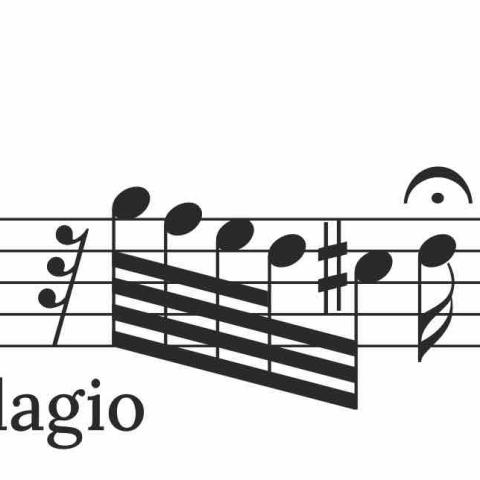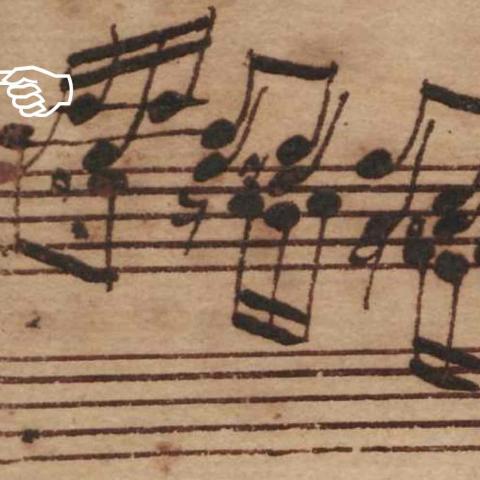Michael Gailit graduated from the University of Music and Performing Arts in Vienna with both performance and pedagogy diplomas in organ as well as in piano. Teaching piano at this institute since 1980, he has also conducted the organ studio at the Musik und Kunst Universität in Vienna since 1995. As church organist he served at St. Augustine’s Church, 1979–2008; in 2011 he was appointed organist at the Jesuit Church (Old University Church).
Both in his performance and teaching repertoire, Gailit includes all style areas on the base of their individual performance practices. He has toured with solo recitals on both instruments in Europe as well as in North America and appeared with leading orchestras and renowned conductors. Recordings, masterclasses, invitations to juries, musicological publications, editing sheet music, compositions, arrangements, supporting the piano-organ duo repertoire, commissioned works, first performances, and finally occasional trips into the theatre and silent movie repertoire should be noted.
Particular attention was received in 1989 for the first performance of the complete piano and organ works of Julius Reubke (1834–1858), the performance of the complete organ works of Franz Schmidt (1874–1939) the same year, as well as in September 2005 a series of six recitals with the trio sonatas of Johann Sebastian Bach, the organ sonatas of Felix Mendelssohn-Bartholdy, and the organ symphonies of Louis Vierne. Currently Gailit is working on a book The Enigma BWV 565, a study elucidating new answers and new questions.

Editor’s note: Part 1 of this series appeared in the June 2021 issue of The Diapason, pages 18–19; part 2 appeared in the July 2021 issue, pages 12–14.
The first and second articles of this series examined the first thirty measures up to the fugue of Johann Sebastian Bach’s Toccata and Fugue in D Minor, BWV 565. Does it make sense to break down this most famous organ work into its smallest parts? Where is the benefit in lining up countless musical terms to describe one note combination after the other? Due to new evidence, the case of BWV 565 deserves a fresh review. Facts that were considered certain became open questions. This concerns first of all the compositional characteristics, but then also the earliest manuscript and its scribe, the dating, and finally, in the search for the author, the localization of a prime suspect.
In the toccata, hitherto undiscovered thematic processes of surprising density and an abundance of motivic metamorphosis has come to light. We apply now this note-by-note investigation to the fugue, the larger section of BWV 565. Measures 12 and 13 have already prepared the theme, as an adjusted stemming reveals (Example 28). Removing the repeating A from the fugue theme, a line emerges that strings together four tetrachords in the upbeat form of a figura suspirans. In addition, eight notes at the beginning represent the nucleus idea (as we labeled the opening mordent and the following descent). Both toccata and fugue start with the mordent A–G–A.
The general layout for the fugue provides for four voices. Actual four-voice texture, however, is only reached in eight measures:
• in measures 52 and 53 with the first pedal entry,
• fragmentarily in measures 100 and 101,
• in measures 120 and 121, where the first tetrachord of the fugue theme lines up in the pedal four times, accompanied by a homophonic texture on the manual,
• and in measures 126 and 127, supporting the climax character of the closing cadence.
Table 1 shows the structure of the fugue. Counting the measures of relevant sections, the sums happen to be all prime numbers. To assign any symbolic meaning to these numbers would be pure speculation. Their common property of avoiding regularity, however, makes them worthy of mention. There are:
• 13 theme entries,
• 29 full measures of the toccata section, the closing chord not included,
• 17 measures for the recitativ section, the closing chord in measure 30 included (with this closing chord both toccata and recitativ avoid an integer, as do all interludes but the first),
• 23 × 2 measures of toccata and recitativ sections together (23 measures on average for each section, but also here an instance to avoid exact 1:1 proportion),
• 71-measure compass of all interludes in the fugue,
• 97-measure compass of the fugue,
• 127 measures from measure 1 to the end of the fugue, and finally,
• 143-measure compass of the complete piece.
At this point, it can be assumed that the inclined reader has become familiar with the constant use and changes of the central motives of the work. Allow yourself the adventure of going on the motive quest yourself. You are welcome to take the role of a fictitious musical CSI agent and find out what all sorts of things the motives go through. Perhaps you like to report circumstantial evidence. Or read on right away.
Entries and counterpoints
The fugue coordinates thirteen theme entries in three groups. Two of the entries are one voice only, the first one of course, and then the twelfth, the pedal solo. Eleven of them are accompanied by a counterpoint in the sense of the word origin punctum contra punctum, Latin for note against note. Table 2 lists the counterpoints in pitch notation, grouped in context with the theme into four sections of four notes. This results in 44 motives that are all related to the main material, among them 21 tetrachords, all of them ascending (green notes in the table) and 14 cross motives (red notes in the table). On beat 1 we localize 24 mordents (highlighted with a gray box). The two immanent voices of the counterpoint to the eighth entry are notated in the table simultaneously, with the accessory notes grayed out.
The criticism regarding counterpoint in BWV 565 fixates on the lack of contrasting qualities. If these were present, however, any contrasting counterpoint would need to waive relationships to the thematic material. The motivic substance of the counterpoints mirrors clearly the ever-present thematic work in BWV 565, as does the variety to the concept of metamorphosis. The motivation for creating a work like BWV 565 may have been, among other things, to explore new qualities away from contrapuntal skills.
While the toccata opening moves almost exclusively in tonic and dominant harmonies, the fugue strongly inclines toward the subdominant G minor. Its theme allows the answer only in that key. Thus, the entries in the first development (the exposition) follow the unusual key sequence: D minor–G minor–D minor–G minor.
The second development starts in measure 57 with an entry in the parallel key of F major and returns with the next entry to D minor in measure 70. After the longest interlude in the fugue, the second development continues with two entries in C minor, rounded up with a fifth entry in G minor. The choice of C minor for two consecutive theme entries is not as far-fetched as sometimes described. If the answer to the theme has to join on the subdominant, only one step further in the circle of fifths is necessary to arrive at the double subdominant C minor.
The theme entry in measure 105 marks the beginning of the third development. Consolidating the main key, all entries remain in D minor. Observing the number of accidentals that belong to the keys of the entries, together with the indication in which voices they occur, the construction plan becomes apparent. The tenor entries are given in red capitals to underline their structural significance (Example 29).
The eleventh entry in measures 107 through 109, sometimes not counted as such, consists of four consecutive tetrachords and is therefore to be regarded as an entry of its own. This variant completes the entries in the final development in the number of four, and it occupies the allotted space in the soprano voice. On the one hand, the theme of a fugue has to remain true to its melodic shape throughout. On the other hand, small deviations from the original shape are justifiable when the theme appears four times in a row in the main key, especially in a piece so dedicated to thematic development. The four entries differ by the following properties:
• entry in measure 105: no changes;
• entry in measure 107: the first tetrachord replaces the repeated A by steps, the last two tetrachords take other positions (Example 30);
• entry in measure 109: waives all other voices as a pedal solo;
• entry in measure 124: the last two notes take other positions.
It looks like the modification of the last entry was necessary to insert another cadence to reach beat 1 with the closing chord. If the theme remained unchanged, the ending would have arrived half a measure early (Example 31).
The interludes
The figurations of the first interlude, measures 34 through 39, combine two tetrachords with almost only cross motives. For a clear graphic presentation, we combine the notes to chords in pitch notation and then project them colored on an open score. As before, the tetrachords are green, the cross motives red (Example 32).
The next interlude stacks only tetrachords across measures 41 through 45 (Example 33). The passage contains a maximum of motivic density. It is like one of those circulating riddles: how many tetrachords can you spot in these measures? The left hand twice has the Phrygian cadence D–C–B-flat–A an octave apart (red notes), plus G–F–E–D (brown notes), prepared by the upbeats F–E–D–C-sharp (green notes). The right hand has four descending tetrachords (red notes) answered by four ascending retrograde derivatives (cyan notes), the last one incomplete. Counting the colored groups, we add seven tetrachords since the last group lacks the last note; counting the ones with notes at the same positions (marked with gray slurs) we add another seven of them for the same reason of the last missing note. On top sits one more tetrachord with A–G–F–E (green notes). We finally arrive at a grand total of 19 tetrachords in four measures (Example 34).
Measures 45 and 46 serve as a transition and combine three turn motives with another variant of the tetrachord (Example 35). Measures 47 and 48 change to a polyphonic texture in complementary rhythms. The nucleus idea appears twice in D minor and split into its three-note groups, mordent—trichord—mordent (Example 36). Subsequently, the chain of sixteenth-note motives in measures 49 and 50 develops three four-note motives: the first four notes of the theme, the tetrachord, and the cross motive, the latter widely stretched (Example 37). Furthermore, the passage also hides two nucleus derivatives (red notes in the example). The counterpoint parts descend with a new aspect. Two tetrachords are notably extended in length and colored with chromaticism (Example 38).
The theme entries of the exposition each have gradually increased the number of voices. The maximum of four voices is reached with the pedal entry in measure 52. The following interlude in measure 54 goes back to three voices. The section repeats the tetrachord in the form of descending steps (Example 39). Since the pattern ascends four steps in measures 54 through 55, we discover eight more tetrachords and therefore a total of 16 tetrachords (Example 40). The pedal picks up the previously introduced idea and extends a tetrachord in length and with chromatic coloring (Example 41).
Three further half measures prepare the beginning of the second development. Modulating to F major, they are filled in the top voice one by one with two turn motives, two new tetrachord derivatives, and finally two simple tetrachords. The lower voice follows in parallel motion in four cases (Example 42). The theme appears with its counterpoint only, the number of voices shrinks further down to two. The next interlude, spanning measures 59 through 61, reduces further. The descending scales combine a pentachord and a tetrachord and ascend along a pentachord. So, this thin texture creates a mass of nine simultaneously ascending pentachords of the notes at the same position in the scales (Example 43)!
Still two voices, but due to the unison C again a thinner texture, measures 62 through 65 shift the mordent to the weak beats of simple figurations. As a result, the constant presence of the main motive of the piece goes surprisingly unnoticed (Example 44).
In measure 66, the reduction of voices finally reaches the texture minimum of one single voice. Simple broken chords suggest that all developmental procedures have ceased. The source of inspiration could have been the arpeggio in measure 2 as another welcome element to develop.
Each harmony is rolled twice, a performance practice best known from the Prelude in C Major, BWV 846, by Johann Sebastian Bach (1685–1750), which dates back to the collection of piano pieces of 1720 for Wilhelm
Friedemann Bach (1710–1784). Again, we combine the notes into chords in pitch notation and then project them on an open score. This reveals five lines with two tetrachords on top and three derivatives below (Example 45).
At 143 measures in total length, the center of BWV 565 is in the middle of measure 71. That is also the center of the D minor entry that in turn marks the center of the whole piece. In the earliest manuscript, measure 72 comprises only three beats of four sixteenth notes. A fitting filler dating from the beginning of the nineteenth century came into use up to the present. It completes measure 72 smoothly, but it deviates too much to claim authenticity. The author discovered that each theme entry appears unabridged, only in measure 72 it lacks a full beat in the earliest manuscript. Completing the theme and the counterpoint, measure 72 is automatically completed as well. Measure 72 regained in all probability its true original form (Example 46). The Diapason thankfully premiered this correction with the publication of “BWV 565: The Fitting Filler for the Fugue” by the author in January 2021, page 17.
Developing a piece with thematic processes gives numerous possibilities to create a diverse variety of music on the basis of unifying motivic material. Examples show, however, that one’s powder can be shot too quickly, that no further development could be found, and that initial momentum and power did not continue. Part 4 will pursue the question as to how or if the composer mastered this challenge.
To be continued.







